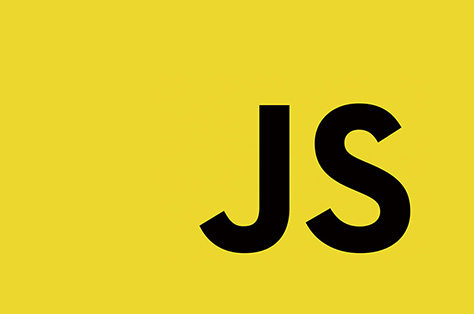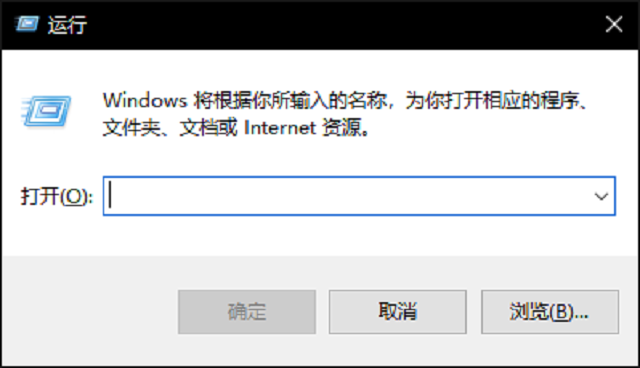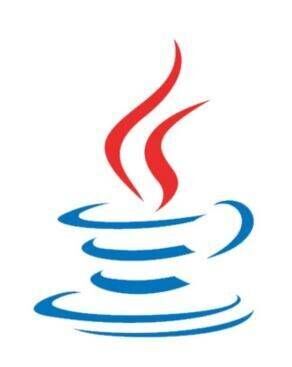HTML & CSS & BootStrap
发表于|更新于
|字数总计:6.6k|阅读时长:28分钟|阅读量:
互联网通信模型
定义:两台经算计通过何种类型的软件进行通信。
HTML
全称:HyperText Markup Language
标签的分类
标签分为:
块级标签
独占一行
如h1-h6
行内标签
可以在同一行显示
如span
单标记
标记没有结束标记
如hr
双标记
标记有结束标记
如a
基本文件结构
1
2
3
4
5
6
7
8
9
10
11
12
13
14
15
16
17
18
19
20
21
22
23
24
25
26
27
28
29
30
31
32
33
34
35
36
37
38
39
40
41
42
43
44
45
46
| <html>
<head>
<meta charset="utf-8" />
<meta name="keywords" content="HTML+CSS前端零基础入门"/>
<meta name="description" content="此网站为您提供HTML+CSS前端自学,以及视频、图文教程..." />
<link rel="shortcut icon" type="image/x-icon" href="https://static.oschina.net/new-osc/img/favicon.ico">
<title>我的第一个网页</title>
</head>
<body>
<h1>
标题标签
</h1>
<p>
段落标签
</p>
</body>
</html>
说明:
1.html
必须要有,他是根标记。
2.head
网页的头部资源。【网页元数据】,其中标签的内容是影响整个网页的。
1.网页的标题
2.网页的字符编码
3.网页的关键字和网页的描述以及作者
4.网页的刷新时间。
等等。
3.body
网页中所有可以显示在页面的都在body中设置。
注意:
浏览器对于HTML标签的解析是没有报错的。
浏览器解析时,遇到不认识标签,会将标签中的内容,以正常内容显示。
|
链接
- 链接是可以从一个页面跳转到另一个页面实现页面直接的导航。
- 提交服务器,产生服务器事件。
- 触发网页本地事件。
- 发送email
- 做锚点【同一网页的链接】
- 图片链接
1
2
3
4
5
6
7
8
9
| 语法:
<a> </a>
href="url"
比如:<a href="../index.html">链接到index.html</a>
../:上一级目录
target:在哪里打开新的页面
_self:在当前窗口打开【默认】
_blank:在新窗口打开
|
1
2
3
4
5
6
7
8
9
10
11
12
13
14
15
16
17
18
19
20
21
22
|
<a href="https://www.baidu.com" target="_self">百度</a>
<a href="stuListlimit.action?stuCode=dfjsakf-2323-jkjfk&name=张三">删除</a>
<a href="javascript:;" onclick="alert('你点击我干嘛?')">点击</a>
<a href="mailto:ykdong@foxmail.com">联系我们</a>
<a name="top"></a>
<div style="height: 20000px;"></div> //此处作用:将页面撑大
<a href="#top">回到顶端</a>
<a href="../index.html">
<img src="../img/0.jpg" >
</a>
|
图片标签
1
2
3
4
5
6
7
8
| 语法:
<img />
属性:
src:图片的地址【任意】
title:图片的标题
alt:图片加载失败的描述
width:宽度
height:高度
|
1
2
| 例子:
<img src="https://pengyirui.gitee.io/img/avatar.png" title="这是我的头像" alt="葫芦" width="500px" height="500px"/>
|
表格
1
2
3
4
5
6
7
8
9
10
11
12
13
14
15
16
17
18
19
20
21
22
23
24
25
26
27
28
29
30
31
32
33
34
35
36
37
38
39
40
| 基本表格:
语法:
<table> :表格
<caption></caption> 表格的标题
<tr> :行
<td></td> :列
<td></td>
<td></td>
</tr>
</table>
属性:
border:表格的边框
width:% px
cellpadding:数据与单元格之间的距离
cellspacing:单元格与单元格之间的距离
rowspan:合并单元格【合并行】
colspan:合并单元格【合并列】
align="center" 设置居中
高级标签(少用)
语法:
<table>
<thead>
<th><th>
</thead>
<tbody>
<tr>
<td></td>
</tr>
</tbody>
<tfoot>
<tr>
<td></td>
</tr>
</tfoot>
</table>
注意:
<thead>和<tfoot>:只能出现一次
<tbody>:可以出现多次
|
1
2
3
4
5
6
7
8
9
10
11
12
13
14
15
16
17
18
19
20
21
22
23
24
25
26
27
28
29
30
31
32
33
34
35
36
37
38
| <table border="1" width="50%" cellpadding="0" cellspacing="0">
<caption>学生管理系统</caption>
<tr>
<td>姓名</td>
<td>年龄</td>
<td>性别</td>
<td>身份证号码</td>
<td>生日</td>
<td>班级</td>
<td>操作</td>
</tr>
<tr>
<td>阿克尚</td>
<td>20</td>
<td>男</td>
<td>3420524852252</td>
<td>2019-01-01</td>
<td>开发班</td>
<td>
<a href="xxx.php?stuCode=3420524852252" onclick="return confirm('确定删除吗?')">删除</a>
|
<a href="#">更新</a>
</td>
</tr>
<tr>
<td>蒙多</td>
<td>22</td>
<td>男</td>
<td>48915218415</td>
<td>2021-09-09</td>
<td>开发班</td>
<td>
<a href="#" onclick="confirm('确定删除吗?')">删除</a>
|
<a href="#">更新</a>
</td>
</tr>
</table>
|
表单
1
2
3
4
5
6
7
8
9
10
11
12
13
14
15
16
17
18
19
20
21
22
23
24
25
26
27
28
29
30
31
32
33
34
35
36
37
38
39
40
41
42
43
44
45
46
47
48
49
50
51
52
53
54
| 用于与用户进行交互,收集用户数据信息。
标签:
1.<form>
属性:
action:服务器的提交地址
method:服务器提交方式 get post
enctype:文件提交类型
2.<input />
属性:
1.type:
取值:
1.text:文本框【默认】
2.password:密码框
3.radio:单选
4.checkbox:多选
5.file:文件上传
6.hidden:隐藏域
7.reset:重置
8.submit:提交
9.button:普通按钮
--HTML5提供【了解】
1.tel:不支持PC端,只支持移动端
2.email:邮件验证
3.color:颜色拾取器
4.number:数字选取
5.date:日期插件
6.datetime:日期插件
7.range:数字选择器
2.placeholder:提示信息
3.maxlength:最大填写字符量
4.value:设置当前输入框的默认值
5.disabled:数据限制,不可修改和提交,只能看
6.readonly:数据限制,不可修改。
7.pattern:数据校验
8.checked:单选与多选的默认选择
9.name:设置与后台服务器交互时服务器获取的哪一个标签的值。
3.<select>
下拉列表
属性:
name:选取的具体数据
<option>
属性:
value:用户选择的数据的具体值
selected:默认选中
4.<textarea>
多行文本
rows:行数
cols:列数
|
1
2
3
4
5
6
7
8
9
10
11
12
13
14
15
16
17
18
19
20
21
22
23
24
25
26
27
28
29
30
31
32
33
34
35
36
37
38
39
40
41
42
43
44
45
46
47
48
| <form action="xxx.php" method="#" enctype="multipart/form-data">
<input type="hidden" name="username" value="f4d60ddb-2fe2-425b-994e-ed9f95b12d70"/>
账号:<input type="text" placeholder="请输入用户名" />
<input type="text" placeholder="请输入用户名" required maxlength="8" value="ykdong@foxmail.com" pattern="\d{6}"/>
<span>账号最小6个,最多8个</span>
</br>
密码:<input type="password" placeholder="请输入密码"/></br>
性别:
男<input type="radio" name="sex" checked value="male"/>
女<input type="radio" name="sex" value="female"/>
保密<input type="radio" name="sex" value="secret"/></br>
爱好:
看书<input type="checkbox" name="book" value="看书" checked/>
工作<input type="checkbox" name="work" value="工作"/>
健身<input type="checkbox" checked disabled value="sport"/><br/>
出生日期:<input type="date" /><br/>
联系方式:<input type="tel" /><br/>
权限:<input type="number" min="2" max="10" step="2" start="2"/><br/>
颜色:<input type="color" /><br/>
email:<input type="email" /><br/>
<input type="image" src='https://pengyirui.gitee.io/img/avatar.png'" /><br/>
<input type="range" min="10" max="20"/><br/>
学历:
<select name="">
<option value ="">--请选择--</option>
<option value ="">胎教</option>
<option value ="" selected>幼儿园</option>
<option value ="">学前班</option>
<option value ="">小学</option>
<option value ="">初中</option>
<option value ="">高中</option>
<option value ="">大学</option>
<option value ="">研究生</option>
<option value ="">博士</option>
<option value ="">博士后</option>
</select>
<br/>
头像:<input type="file" />
<br/>
自我介绍:<textarea rows="8" cols="100"></textarea>
<input type="reset" value="重置" />
<input type="submit" value="提交"/>
<input type="button" value="点击"/>
</form>
|
列表
1
2
3
4
5
6
7
8
9
10
11
12
13
14
15
| 无序列表【使用率较高】
语法:
<ul>
<li></li>
</ul>
有序列表
<ol>
<li></li>
</ol>
定义列表【极少用到】
<dl>
<dt></dt>
<dd></dd>
</dl>
|
内嵌框架
1
2
3
4
5
6
7
8
9
| 专门用于将众多的.html文件整合在一个文件中,形成一个网页效果。
语法:
<iframe></iframe>
属性:
src:要嵌入到网页的文件路径
width:宽度
height:高度
frameborder:边框
scrolling:鼠标滚轮 取值:no
|
1
2
|
<iframe src="left.html" width="100px" scrolling="no" height="800px" frameborder="0"></iframe>
|
文本标签
1
2
3
4
5
6
7
8
9
10
11
12
13
14
15
| h1-h6:标题标签 块级标签
p:段落 块级标签
span:文本内容 行内标签
sub:下标
sup:上标
del:删除线
i:斜体
b:加粗
strong:加粗
ins:下划线
small:小字体
big:大字体
bdo:文本方向
abbr:文本描述
|
1
2
3
4
5
6
7
8
9
10
11
12
13
14
15
16
17
18
19
20
21
22
23
| <h1>标题标签,块级标记</h1>
<p>你</p><p>好</p>
Iphone13 pro max 不要<del>8888</del> 也不要<del>888</del> 只需要<span style="color: red; font-size: 34px; font-weight: bold;">98元</span>,就可以带回家
<br/>
水的分子表达式是:H<sub>2</sub>O<br/>
2的3次方等于:2<sup>3</sup>=8
<hr/>
welcome <i>to</i> GuangZhou...<br/>
welcome <span style="font-style: italic;">to</span> GuangZhou...<br/>
welcome <b>to</b> GuangZhou...<br/>
welcome <span style="font-weight:bold ;">to</span> GuangZhou...<br/>
welcome <strong>to</strong> GuangZhou...<br/>
<ins>下划线</ins><br/>
<span style="text-decoration: underline">下划线</span><br/>
<small>小小小</small><br/>
<big>大大大</big><br/>
<bdo dir="rtl">welcome to china</bdo><br/>
<abbr title="这里的文字可以隐藏">这段文字的背后你看不见</abbr>
|
多媒体
用于加载视频、声音文件的标签。
1
2
3
4
5
6
7
8
9
|
<video></video>
属性:
autoplay:自动播放
controls:控制台
loop:循环播放
<audio></audio>
|
1
| <video src="../video/movie.mp4" width="320" height="240" controls autoplay loop></video>
|
了解
1
2
3
4
5
6
7
8
9
10
11
12
13
14
15
16
17
18
19
20
21
22
23
24
25
26
27
28
29
30
31
32
33
34
35
36
37
38
39
40
41
42
43
44
45
46
47
48
49
50
51
52
53
54
55
56
57
58
|
<article>
<header>标题</header>
<section>
第一段
</section>
<section>
第二段
</section>
<footer>脚注</footer>
</article>
<hr/>
<figure>
<figcaption>Logo标识</figcaption>
<img src="../img/0.jpg" />
</figure>
<hr/>
<nav style="width: 100px;height: 200px; border: 1px solid red; margin-left: 200px;">
<ul>
<li>网页</li>
<li>资讯</li>
<li>视频</li>
<li>贴吧</li>
<li>音乐</li>
<li>游戏</li>
</ul>
</nav>
welcome <mark>to</mark> HTML
<br/>
我在<time datetime="2019-2-14">情人节</time>有个约会
<br/>
<details>
<summary>HTML简介</summary>
<p>HTML是一门超文本标记语言</p>
<p>HTML可以包含文本、视频、音频、图片、文字等等数据。</p>
</details>
<hr/>
<meter max="100" min="1" value="12" high="41" low="20"></meter>
<hr/>
<progress value="60" max="100"></progress>
|
CSS
全称:cascading style sheets
如果把html比作一个人,那css就是人的衣服
由选择器、属性、属性值组成
- 选择器:
选择器是用来定义CSS样式名称,每种选择器都有各自的写法。
- 属性:
修改网页中元素样式的根本。
- 属性值:
所有属性都需要一个或者多个属性来确定标签在修改样式中的表现。
引入CSS的方式
1
2
3
4
5
6
7
8
9
10
11
12
13
14
15
16
17
| 在页面中引入CSS样式有3中方式:
<style type="text/css">
p{
color: red;
}
</style>
<body style="background-color: #ccc;">
<p>你好CSS</p>
<span>账号可以使用</span>
<span>账号不可以使用</span>
</body>
<link rel="stylesheet" type="text/css" href="../css/oa_regist_style.css"/>
|
选择器
- 概念
在对网页中的元素进行样式修改的时候,首先要找到要修改的标签,CSS选择器就是用来寻找指定的标签的。
用于过滤网页中相同名称或者相同位置的标签。
选择器的分类
- 基本选择器
- 属性选择器
- 层次选择器、后代选择器
- 派生/分组/集体选择器
- 伪类选择器
元素选择器
使用HTML标签作为选择器的名称。
例如:div{}就是用来选取整个网页中的div标签
1
2
3
4
5
6
7
8
9
10
11
12
|
p{
color: red;
}
ul{
list-style: none;
}
a{
text-decoration: none;
color: black;
}
|
id选择器
通过给标签设置一个ID来选择唯一的标签。
建议:id唯一
1
2
3
4
5
6
7
8
9
10
11
12
13
14
15
16
17
|
<style type="text/css">
#s1{
color: #008000;
}
</style>
<body>
<span id="s1">welcome to china</span>
</body>
|
类选择器
有些元素的元素名不相同,但是拥有相同的样式,
我们就可以使用类选择器进行样式的设置。
1
2
3
4
5
6
7
8
9
10
11
12
13
14
15
16
17
18
| 语法:
.class{
属性:属性值;
}
<style type="text/css">
.c1{
font-size: 18px;
}
</style>
<body>
<p class="c1">《关于讨论双减政策下,大学生家教是否可行》</p>
<span class="c1">没有教师资格证的学生,不允许私下家教</span>
</body>
|
属性选择器
根据指定的属性名来找元素
1
2
3
4
5
6
7
8
9
10
11
12
13
14
15
| 语法:
元素名[属性名]{}
<style type="text/css">
p[hello]{
color: #FF0000;
font-size: 18px;
}
</style>
<body>
<p hello="happy">自定义属性的元素</p>
<p world="happy">普通的p元素</p>
</body>
|
根据指定属性和属性值来找元素
1
2
3
4
5
6
7
8
9
10
11
12
13
14
15
16
17
18
19
20
| 语法:
元素名[属性名="属性值"]{}
<style type="text/css">
p[hello="self"]{
color: #FF0000;
font-size: 18px;
}
p[hello="happy"]{
text-decoration: underline;
}
</style>
<body>
<p hello="self">自定义属性的元素</p>
<p hello="happy">值为happy</p>
</body>
|
根据属性值中包含指定的词汇查找元素【类似模糊匹配】
注意!匹配的不是字符,而是词汇,词汇之间是以空格分开。
1
2
3
4
5
6
7
8
9
| <style type="text/css">
p[title~=s]{
color: #008000;
}
</style>
<body>
<p title="dongyukun handsome s">帅气的p标签</p>
</body>
|
根据属性值中包含指定的词汇开头的元素【开头精确匹配】
注意!匹配的是开头的单词,多个单词之间用 "-" 分开。
1
2
3
4
5
6
7
8
| <style type="text/css">
p[hello|=d]{
color: #FF0000;
}
</style>
<body>
<p hello="d-dongyk-happy">我是p标签的内容</p>
</body>
|
根据属性值中包含指定的词汇开头的元素【开头模糊匹配】
注意!匹配的是开头的字符。
1
2
3
4
5
6
7
8
9
| <style type="text/css">
p[hello ^= a]{
color: #FF0000;
}
</style>
<body>
<p hello="a_bc">我是p标签的内容</p>
</body>
|
按照指定字符结尾的元素
注意!匹配的是结尾的字符
1
2
3
4
5
6
7
8
9
| <style type="text/css">
p[class $= test]{
color: red;
}
</style>
<body>
<p class="firstedtest">普通的p元素</p>
</body>
|
匹配属性值中包含指定值的元素
注意!在属性值中全局匹配指定的值。
1
2
3
4
5
6
7
8
9
10
11
12
13
| <style type="text/css">
p[class *= t]{
color: red;
}
</style>
<body>
<p class="firsttestabcfa">第一个p元素</p>
<p class="test_first">第二个p元素</p>
<p class="second_test">第三个p元素</p>
<p class="test_second">第四个p元素</p>
</body>
|
层次选择器
又名后代选择器
专门用于查找嵌套的html元素
子元素选择器
1
2
3
4
5
6
7
8
9
10
11
12
13
14
15
16
17
18
| 语法:
div a{属性名:属性值}
只要a在div中,就可以找到
<style type="text/css">
div a{
text-decoration: none;
}
</style>
<body>
<div>
<p>
<a href="#">百度</a>
</p>
<a href="#">新浪</a>
</div>
</body>
|
直接子元素选择器
1
2
3
4
5
6
7
8
9
10
11
12
13
14
15
16
17
18
| 语法:
div > a{属性名:属性值}
只查找div下面a元素
<style type="text/css">
div > a{
text-decoration: none;
}
</style>
<body>
<div>
<p>
<a href="#">百度</a>
</p>
<a href="#">新浪</a>
</div>
</body>
|
相邻兄弟选择器(第一个同级元素
1
2
3
4
5
6
7
8
9
10
11
12
13
14
15
16
17
| 语法:
h1 + p{属性名:属性值}
只查找指定元素下面的 第一个同级元素 。
<style type="text/css">
h1 + p{
color: red;
}
</style>
<body>
<p>这是h1上的p标签中的文字</p>
<h1>这h1标签中的文字</h1>
<p>这是h1下的p标签中的文字</p>
<p>这是h1下下的p标签中的文字</p>
<p>这是h1下下的p标签中的文字</p>
</body>
|
相邻兄弟选择器(所有同级元素
1
2
3
4
5
6
7
8
9
10
11
12
13
14
15
16
17
18
| 语法:
h1 ~ p{属性名:属性值}
只查找指定元素下面的 所有同级元素 。
<style type="text/css">
h1 ~ p{
color: red;
}
</style>
<body>
<p>这是h1上的p标签中的文字</p>
<h1>这h1标签中的文字</h1>
<p>这是h1下的p标签中的文字</p>
<p>这是h1下下的p标签中的文字</p>
<p>这是h1下下的p标签中的文字</p>
<span>这是h1下面的span元素</span>
</body>
|
派生/分组/集体选择器
将不同元素但是同一样式的标签聚合在一起。
无法一一列举
1
2
3
4
| 大致语法:
#content > #t1,form[action='#'] > input,.app,img{
}
|
5.伪类选择器
伪类:同一个标签,根据其不同的种状态,有不同的样式。这就叫做“伪类”。
伪类用冒号来表示。
1
2
3
4
| a:hover{color: lightblue;}
a:link{color: red;}
a:visited{color: blue;}
a:active{color: yellow;}
|
选择器的优先级
内联样式 > 内部样式 > 外部样式
(最接近html的优先生效)
!important:强制使用,会将选择器的优先级去除,有限使用它修饰的样式。
1
2
3
4
5
6
7
8
9
10
11
12
13
14
| <link rel="stylesheet" type="text/css" href="../css/oa_regist_style.css"/>
<style type="text/css">
p{
font-size: 20px;
}
@import url("../css/oa_regist_style.css");
</style>
<body>
<p style="color: #FF0000;">这是一个普通的p标签</p>
</body>
|
常用的CSS属性
字体样式(font
1
2
3
4
5
| p{
font: italic bold 30px "微软雅黑";
}
|
背景样式(background
1
2
3
4
5
6
7
8
9
10
11
12
13
14
| div{
width: 1500px;
height: 1500px;
background: #ccc url(../img/0.jpg) no-repeat right top;
}
|
文本样式
1
2
3
4
5
6
7
8
9
10
11
12
13
14
15
16
17
| 1.color:文本颜色
2.line-height:行高
3.text-aligin:居中【左右居中】
4.text-indet:文字的留白
5.text-decoration:
取值:
line-through:贯穿线
underline:下划线
overline:上划线
6.text-transform:
取值:
uppercase:大写
lowercase:小写
7.letter-sapcing:字符之间的间距
8.word-spacing:单词之间的间距
按照空格来区分是否是一个单词。
|
列表属性
1
2
3
4
5
6
7
8
9
10
11
| <!--
list-style-image:列表图片
list-style:列表样式一般设置none,表示没有前面的点
list-style-type:列表样式类型
-->
ul{
list-style: none;
list-style-type: oriya;
list-style-image: url(../img/0.jpg);
}
|
表格属性
1
2
3
| 单元格与单元格之间的间距
border-collapse: collapse;(边与边合并)
:separate;(不合并)
|
盒子模型
盒子模型就是在网页设计中经常用到的一种思维模式。
即:内容、边框、边界,为节点的一个容器思想。
将众多不同元素放置在容器中,让对容器进行定位。
1
2
3
4
5
6
7
|
属性:
margin:外边距
边框与边框之间的距离,两个容器之间的距离
padding:内边距
内容与边框的距离,内边距会增加容器的宽度或者高度
|
浮动(float
1
2
3
4
5
6
7
8
9
10
11
12
13
| 可以使块级元素在同一行显示。
float:
取值:
left:左边浮动
right:右边浮动
本质是:使当前浮动元素脱离正常文档流
正常文档流是按照左上布局,按照顺序放置元素。
clear:清除浮动
取值:both
消除浮动所带来的影响。
元素浮动之后原有的位置会空置出来,默认会让其它元素占用。
清除浮动就是为了不让其它元素使用空出来的位置。
|
定位(position
1
2
3
4
5
6
7
| position:定位属性
取值:
static:默认,按照正常文档流显示元素
relative:相对定位,相对于元素当前的位置进行定位
absolute:绝对定位,相对于第一个已经定位的父元素定位,如果没有父元素,就相对于body定位。
fixed:固定定位。(类似广告,一直固定在某个地方)
sticky:粘贴定位 (类似excel的窗口冻结)
|
display
1
2
3
4
5
6
7
8
9
| 隐藏和显示元素以及将块级元素变为行内元素,
也可以将行内元素变为块级元素。
属性:
display
取值:
none:隐藏元素
block:显示元素
inline-block:将行内标记变成块级标记
inline:将块级标签变为行内标签
|
BootStrap
用于快速开发web应用程序和网站的前端框架。基于HTML、CSS、JS【Jquery】的
https://v3.bootcss.com
https://www.bootcss.com/
https://www.runoob.com/bootstrap/bootstrap-tutorial.html
学习链接
菜鸟教程:https://www.runoob.com/html/html5-intro.html
W3:https://www.w3school.com.cn
MDN WebDocs:https://developer.mozilla.org/zh-CN/docs/Web








